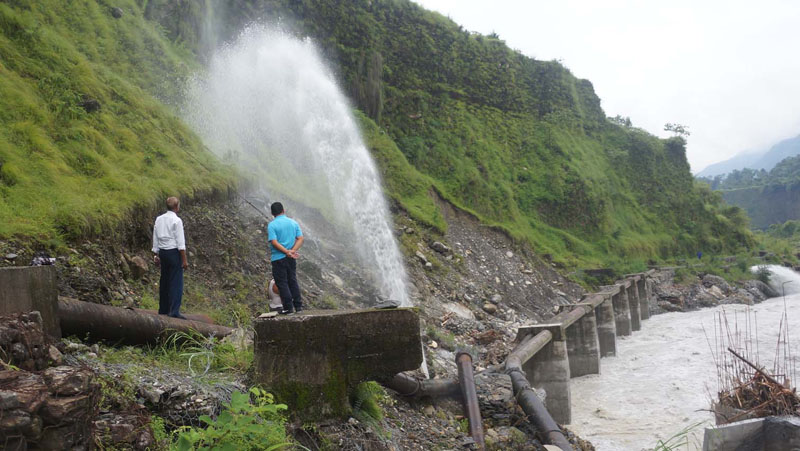Land plotting blocks water course
Pokhara, July 27
Monsoon has brought the worst nightmare for Mohan Bahadur Bishwokarma of Daraun, a teacher at a local school in Lakeside, Syangja, who bought a small strip of land and built a house at Shitalmarga in Pokhara’s Chhorepatan about five years ago.
His house is now waterlogged due to rainfall.
Similarly, with hard-earned money in Qatar, Phadindra Poudel of Chilaunebas, Syangja, had managed to purchase a plot of land and build a house four years ago.
But with the onset of monsoon he has had to cope with the same problem of waterlogging.No different is the plight of his neighbour Maya Neupane and many others here.
In fact, hundreds of houses which were built in the area that abuts on Raniban in the northern part of Chhorepatan in Pokhara municipality-17 and elsewhere in Chhorepatan area are now at risk.
“There is Damardarkhola in the south of Raniban which is fed by waters from small streams. Besides, water from Tarikhola, a rivulet, and from the embankment in Phewa Lake mix in the river through more than seven natural holes on the ground.
But with land plotting gaining momentum and people starting to cover these holes and selling land for residential purpose, the natural course of water has got blocked, hence the risk,” said a local Mohan Bishwokarma.
According to Bishwokarma, more than 1,000 houses have been built in Chorepatan by now.
“As the land plots were prepared by transporting and adding soil up to 22 feet from elsewhere, houses built on such land plots are risky. But as people buying the plots here hardly know these things, they end up buying land and building houses,” said a local.
About three years ago, a team, including Engineer Surendra Pande from Pokhara sub-metropolis had studied the area and concluded that the practice of adding soil to elevate the land and building walls have increased the risk in the area.
The team had blamed haphazard land plotting and blockage of natural course of water as the major risk-causing factors. They had also pointed out the need of a long-term plan to ease the outlet of water.
Geographer Bishwo Shrestha, on his part, identified Pokhara as sitting on rocks with lime. “As the rocks on which Pokhara is perched is filled with lime, it is naturally quite fragile, especially when the rock comes in contact with water,” Shrestha said, adding, “This is why there are already many holes on the ground in Pokhara and a number of others are freshly appearing as a result of reaction between the rock and water.”
Department of Mine and Geology and German-based Federal Institute for Geosciences and Natural Resources had carried out a geological study of Pokhara about 18 years ago.
The joint team, following the study, had prepared an engineering and environment map, where risky areas have been marked with signals.
As per the map, Chhorepatan of Pokhara is the most risky area.






